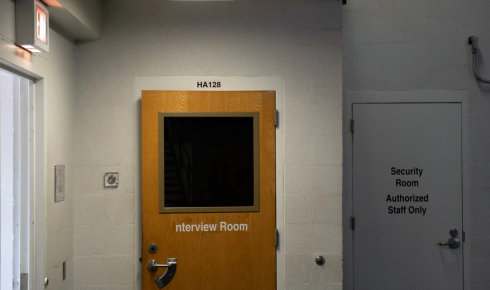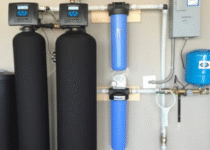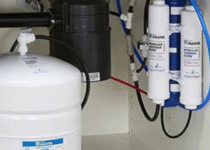Standards Detention Center Doors Must Meet Before Being Approved for Use

Safety inside correctional facilities depends heavily on the doors that separate secure areas. Beyond acting as barriers, these doors serve as fire protectors, impact absorbers, and lock housings that keep order within secure environments. Their approval requires meeting multiple technical standards that most people outside the industry rarely see, yet detention equipment contractors know these benchmarks form the foundation of facility security.
Compliance with ASTM F1577 and F1643 Standards for Lock Hardware
Lock hardware inside detention center doors must meet strength and endurance requirements set by ASTM F1577 and F1643. These standards test the durability of locking systems under repetitive use and forceful tampering, ensuring the mechanisms cannot be easily bypassed or worn out over time. Without passing these guidelines, lock hardware is considered unsuitable for correctional use.
ASTM standards also establish the minimum performance for mechanical components inside locks, including latch bolts and cylinders. Security detention equipment contractor teams review these certifications closely before installation to ensure the locking systems maintain consistent reliability under heavy use. In modular jails, where adaptability is important, locks tested to these benchmarks allow facilities to maintain uniform security across different unit designs.
UL Fire-rated Door Assemblies in Line with Correctional Safety Norms
Fire safety is non-negotiable in any secured building. Detention center doors must carry UL fire ratings that prove they can resist fire spread for a specified period. A certified fire-rated door prevents flames and smoke from moving into occupied areas, giving staff time to relocate individuals safely.
The assemblies are tested under extreme heat, ensuring that not only the door surface but also frames, glazing, and hardware resist fire penetration. Detention equipment contractors verify that the fire-rated labeling remains visible and intact because inspectors look for these details during audits. In modular jails, certified fire-rated assemblies are designed to integrate smoothly with prefabricated construction methods while maintaining compliance with correctional fire safety standards.
Hollow Metal Construction Meeting NAAMM/HMMA-863 Test Protocols
Hollow metal doors remain the industry standard for correctional use due to their strength-to-weight ratio. Under NAAMM/HMMA-863 protocols, these doors undergo tests that measure resistance against forced entry, wear, and environmental effects like humidity or temperature changes. The protocols confirm that hollow metal construction performs consistently across various security levels.
In practice, hollow metal doors are engineered with reinforced cores, welded seams, and tamper-resistant edges. Security detention equipment contractor teams rely on these specifications when delivering products that must withstand constant daily use inside facilities. For modular jails, hollow metal construction ensures long-term performance without requiring frequent replacement, which reduces overall maintenance costs.
Static, Impact and Rack Load Testing Criteria per Detention Door Guides
Doors inside secure facilities must endure more than ordinary wear. They are subjected to static load tests that simulate weight bearing, impact tests that measure sudden strikes, and rack load testing that evaluates twisting forces on the frame. Passing all three ensures the doors maintain alignment and security under heavy stress.
Impact testing is particularly vital because it replicates scenarios where a door may be struck with force repeatedly. Detention equipment contractors confirm that detention center doors hold their integrity after these evaluations, proving they can resist attempts to bend, break, or misalign them. Modular jails often rely on doors tested through this process to guarantee long-term resilience despite varying layouts and population sizes.
Fire Door Labeling and Installation Tolerances
Even the strongest fire-rated door loses its certification if improperly labeled or installed. Labels mark the fire resistance duration and must remain visible after installation. Missing or damaged labels may lead to regulatory non-compliance, forcing replacements or retrofits.
Installation tolerances are just as important. If a fire door is mounted outside of allowed clearances, smoke and flames may bypass seals. Security detention equipment contractor professionals verify tolerances at the time of fitting, preventing costly mistakes. By following these rules, detention center doors retain both fire protection and structural reliability over the long term.
Matching Frame and Door Interface Tolerances for Security Continuity
Frames and doors must work together with near-perfect precision. Gaps larger than specified tolerances create weak points where tools could be inserted to pry open a door. The standards for frame-to-door interfaces outline acceptable clearances to maintain both fire safety and security continuity.
For detention equipment contractors, measuring and adjusting tolerances is part of the installation process. This careful attention ensures the entire system performs as a single secure barrier rather than separate components. In modular jails, consistency in these tolerances makes it easier to maintain identical security levels across multiple units, regardless of their size or configuration.
Integration of Detention-grade Locking Devices and Hardware
The final step in approval is the integration of detention-grade hardware with the door system. Locks, hinges, and control devices must function together under both manual and automated operation. The standards require that once integrated, the system resists tampering and maintains ease of operation for staff.
This integration often includes electronic monitoring devices, tie-ins to central control systems, and specialty hardware designed for correctional use. Security detention equipment contractor teams test these integrations under simulated daily operations before sign-off. Whether used in traditional facilities or modular jails, this integration ensures detention center doors perform to the highest standard of safety and security.



